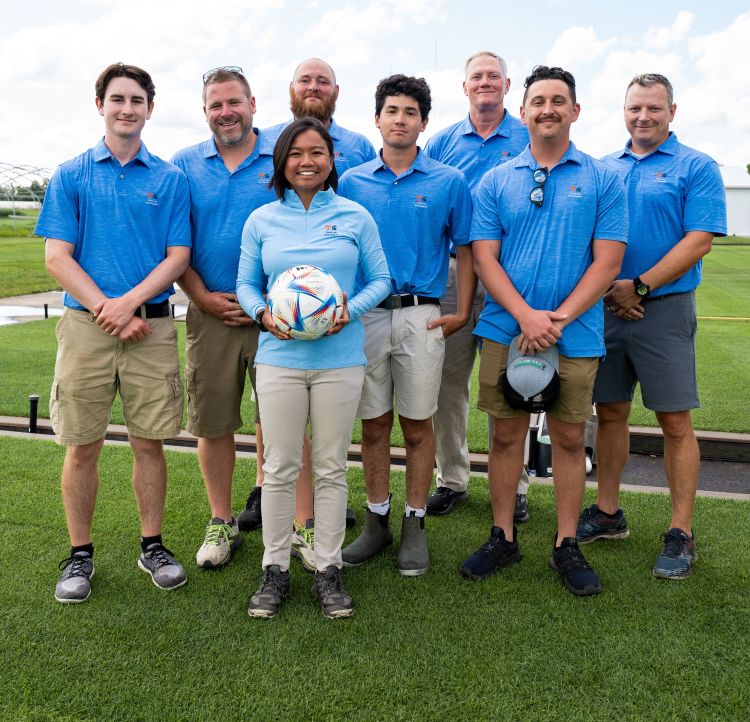
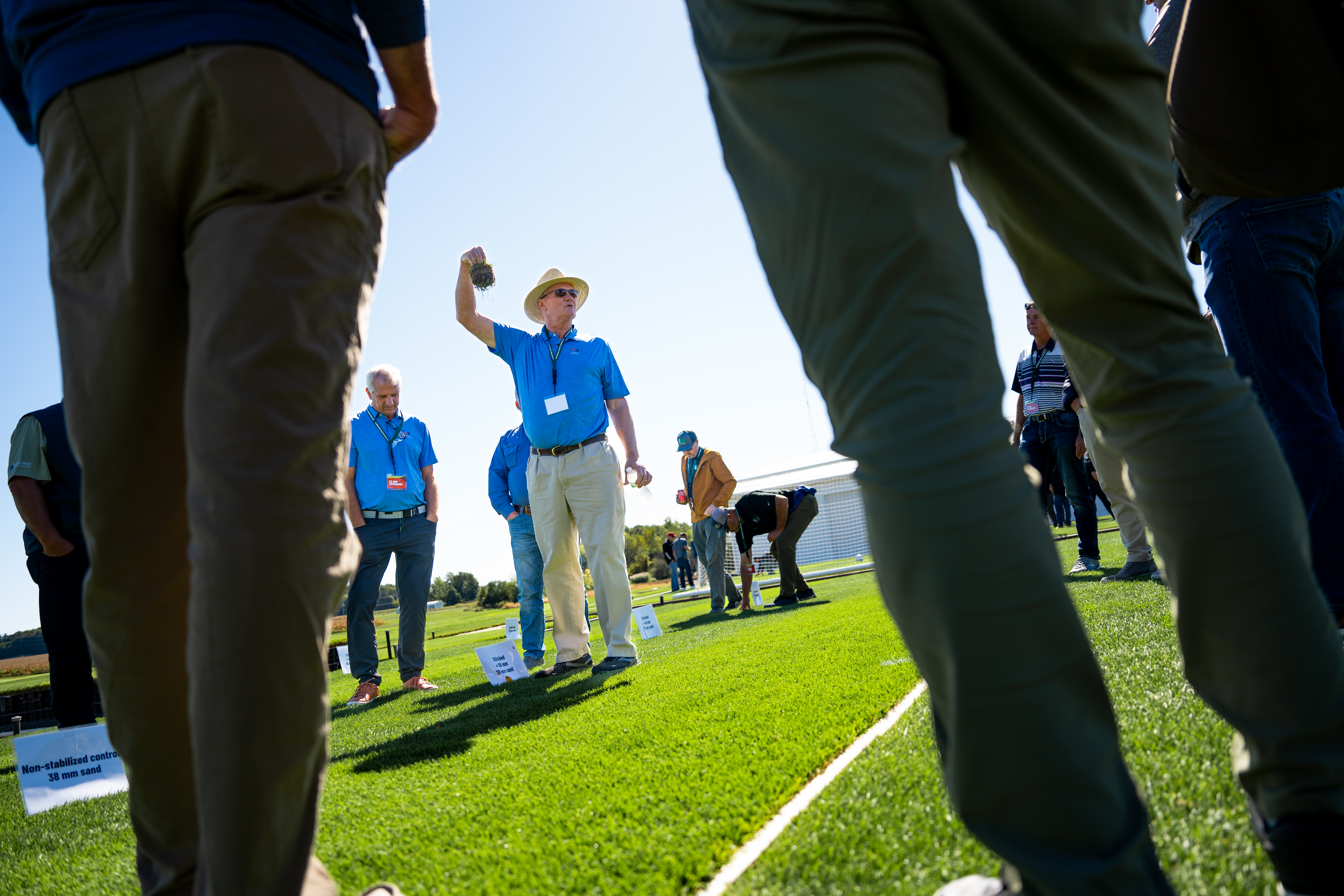
When Dr. Trey Rogers was hired in 1988 as an assistant professor in the Michigan State University (MSU) Department of Crop and Soil Sciences, he came to East Lansing intending to develop applicable research and train graduates to make an impact in the world of scientific discovery.
“The late Professor Donald V. Waddington, my advisor at Penn State University, told me when I was just starting out and trying to find my path, that ‘athletic fields and sports turf was the wave of the future.’ If I wanted to make a splash, sports turf was the way to go,” said Rogers, who is director of the MSU Turfgrass Management Program.
Rogers’ opportunity to make his splash came in 1992 when the International Federation of Association Football (FIFA) sought experts to make possible a sports feat never achieved – playing a World Cup soccer match on a natural grass surface inside a domed stadium.
Rogers was selected by FIFA to lead the team in charge of growing and installing a natural grass playing surface inside the Pontiac Silverdome. The MSU Turfgrass team worked with FIFA and the city of Detroit’s organizing committee to develop a comprehensive plan to pitch to FIFA’s selection committee.
On March 23, 1992, FIFA awarded the indoor game to Detroit, and Rogers and his team embarked on a two-year mission to develop a portable tray system capable of supporting natural grass growth, transportation and installation into the Silverdome in a matter of days.
At that time, modular-sports-turf systems were novel and untested. Spartan researchers and graduate students spent countless hours evaluating which grass species, soil types, fertility plans and light levels would work best to grow and support inside a domed stadium. MSU constructed a 6,600-square-foot model of the Pontiac Silverdome at the Hancock Turfgrass Research Center. Dubbed “Silverdome West,” the facility was the hub of research and application of sod-on-plastic and modular sports-turf systems in the early 1990s.
“FIFA had the vision and gave us the mission, and now it was up to us to make it possible,” Rogers said.
The 1994 World Cup games in Detroit were a success, establishing modular systems as a practical and applicable option for indoor natural grass fields.
“It was a massive effort, and it could not have been done without the brilliance and extreme effort put in by our students at the time, many of whom have gone on to make their own careers and impact across the industry and academia,” Rogers said.
MSU Turfgrass students John Sorochan (’93, ’95, M.S. ’99, Ph.D. ’02) and John Stier (Ph.D. ’97) contributed months of research, travel and hard labor to make the 1994 World Cup a possibility for the city of Detroit.
The project was a “once-in-a-lifetime,” opportunity, said Sorochan, who now serves as a Distinguished Professor for Turfgrass Science and Management at the University of Tennessee.
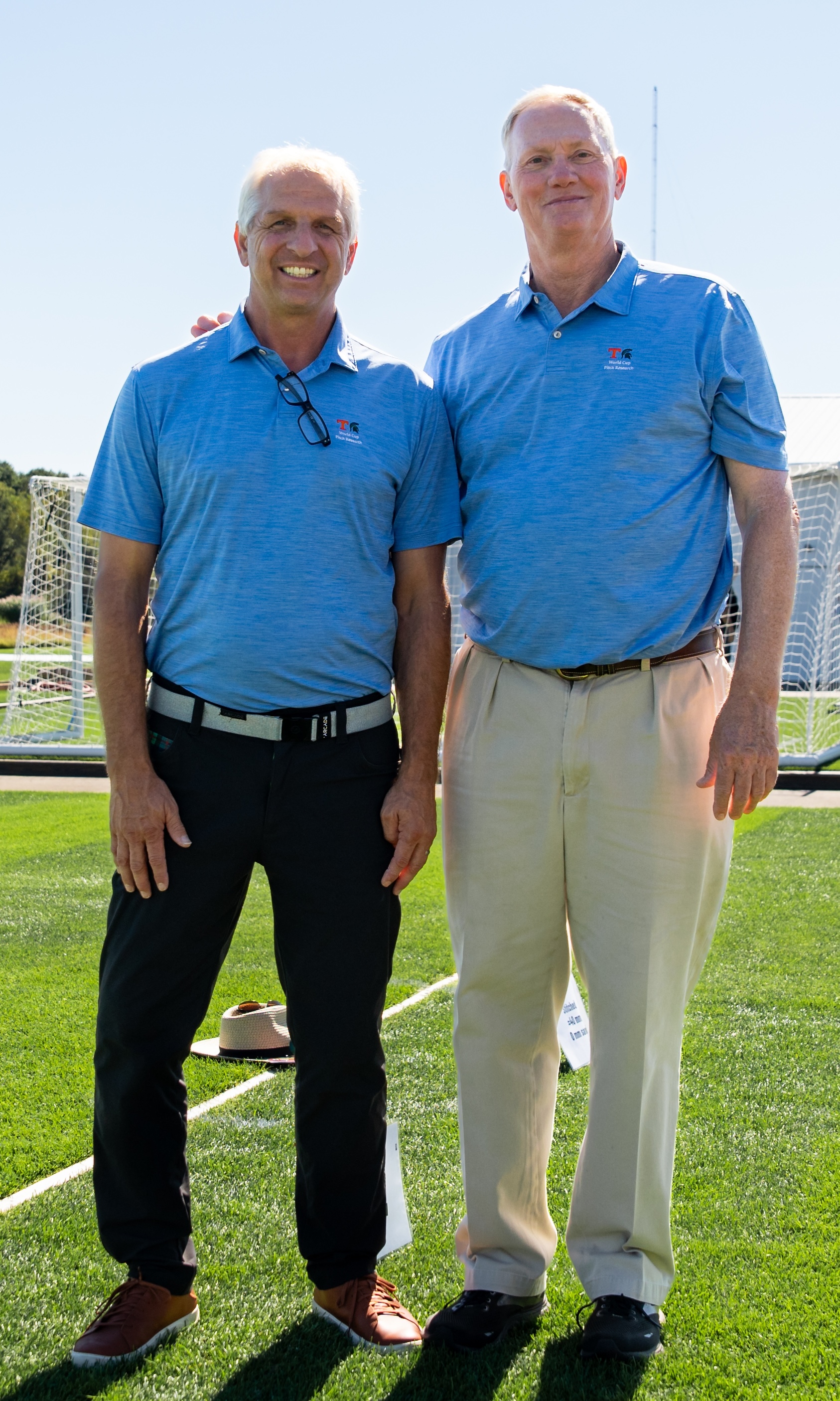
MSU Turfgrass made its “splash” with production of modular systems for the 1994 World Cup, which ultimately served as a springboard to the careers of several MSU graduates, including Sorochan, Stier (Associate Dean-Herbert College of Agriculture and Professor-Plant Sciences at Tennessee) and MSU alumnus Brian Horgan, who was recently named Dean of the College of Agriculture, Food and Environmental Sciences at Cal Poly.
FIFA is preparing for another North American World Cup in 2026 but this time the project is even bigger, as the field expands to 48 teams playing 104 games in 16 host cities across the United States, Canada and Mexico.
Once again, FIFA has charged MSU Turfgrass, this time working in partnership with UT Turfgrass Science and Management faculty and students, to ensure world-class playing surfaces in stadiums across North America.
“This is truly a second ‘once-in-a-lifetime’ opportunity for me, John Stier and John Sorochan,” said Rogers, who serves as the co-PI on the project with Sorochan. “Our collaboration with FIFA has been like a dream come true, and we are excited to work with our sod farmers across the country who do the hard work growing the grass, our stadium managers who help us adapt the pitches to their unique venues, and FIFA for providing the vision and trust to let us do the work.”
The 2026 event is also a chance for a new crop of MSU graduate researchers, like Jake Kilby (M.S. ’24), Ryan Bearss (M.S. ’22) and Jackie Lyn “Jack” Guevara (Ph.D. ’25), to apply unique perspectives to the global event and make their mark on the sports turf world soon after earning MSU diplomas.
Turfgrass alum lands ‘dream job’ with FIFA
Jake Kilby loves soccer. Growing up in Onsted, Michigan, he spent free hours playing the sport with friends, watching on TV and dreaming of becoming a soccer star while controlling his favorite players in video games. He knew he always wanted the game to be part of his life.
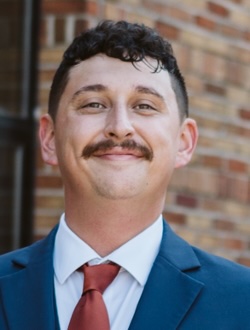
“My dad loves to tell a story from when I was very young about my career plans to become a professional soccer player,” said Kilby, an MSU graduate with bachelor’s and master’s degrees in Crop and Soil Sciences. “Apparently, as a child, I had a whole plan mapped out. I would take karate and gymnastics lessons to become a karate champion. Once I became a professional karate champion, I would save up enough money to travel overseas to pursue a career in professional soccer.’”
Kilby’s route to the 2026 FIFA World Cup varied slightly from his childhood plan. He didn’t find his calling through athletic feats of speed and skill, but through scientific research and academic achievement as a student in the MSU Turfgrass Management Program.
Kilby was hired for “his dream job” by FIFA in January to serve as stadium pitch operations supervisor for the 2026 World Cup. It was a benchmark in a career journey that found its direction as a student at MSU.
He learned of the MSU Turfgrass Program while already an undergraduate student. His friends spoke highly of the program, and he saw a chance to connect his academic career to the sport he loves. His first step was to reach out to meet with MSU’s “Grass Guru.”
“I was impressed by Jake right away and saw his interest in the growing field of sports turf management. When I asked him what he ultimately wanted to do, his first response was ‘work for FIFA,’” Rogers said. “When we got word that we would be working on the 2026 World Cup project, it didn’t take much to convince him to stay on to finish his master’s and apply that work to the FIFA project; and when FIFA called looking for turf managers, I told them I have someone who would walk through fire to work for FIFA.”
Kilby completed his Master’s in December of 2024 and was hired to serve as stadium pitch manager for the 2025 FIFA Club World Cup and 2026 FIFA World Cup.
“Working for FIFA was a dream job for me. As I learned more about turf grass at school and interned at golf courses and in sports turf management, I knew I wanted to connect that knowledge back to soccer,” said Kilby, whose research focuses on the use of plant growth regulators on sod grown on plastic to understand best practices for temporary playing surfaces in domed stadiums. “I have only been on the job for six months, but I can still say it’s my dream job. I can proudly say that I am contributing to the success behind the biggest stage in the world for the sport that I love.”
The FIFA Club World Cup kicked off in Miami, Kilby’s new hometown, on June 14, with 63 matches in 12 venues culminating in the final on July 13. The tournament brings the top professional teams from around the world to North America to compete to decide the best club team in the world. The tournament also gives the first chance to researchers and turf managers like Kilby to see how their work stands up to the test of the best players in the world.
“I was at MetLife stadium in New Jersey for the first opening match there, and it was amazing,” Kilby said. “It was beautiful to see the culture of soccer being fully embraced here in the U.S. Both teams played extremely hard, which is a great sign to us grass managers, because that means that they trust the field they are playing on. I never could have dreamed that I would one day be a small piece of the puzzle of making the World Cup events happen.”
From Spartan student to leader in the field
After the ’94 World Cup, Sorochan continued to immerse himself in the world of soccer pitch development as a graduate student at MSU, traveling around the world to provide expertise for clubs like Real Madrid, Atletico Madrid, Valencia, and once again working with Stier on a project in La Platte, Argentina.
“It was an awesome experience and invaluable to us as students at the time,” Sorochan said. “I remember it like it was yesterday: toward the end of the ’94 World Cup, we had the chance to go up on the fabric roof of the Silverdome. We, of course, jumped on it like a trampoline, but we also looked down through the vents in the roof onto the field. Once I got over the fear factor of the wind blasting in my face, I looked down onto the field from above – looking at the wear and tear on the field after four World Cup games, knowing that the research we did at ‘Silverdome West’ contributed to making the field better for the players. I knew then that I wanted to improve sports fields for the players and the games I love.”
Soon after finishing his Ph.D. In December of 2001, Sorochan joined the faculty at the University of Tennessee in Knoxville.
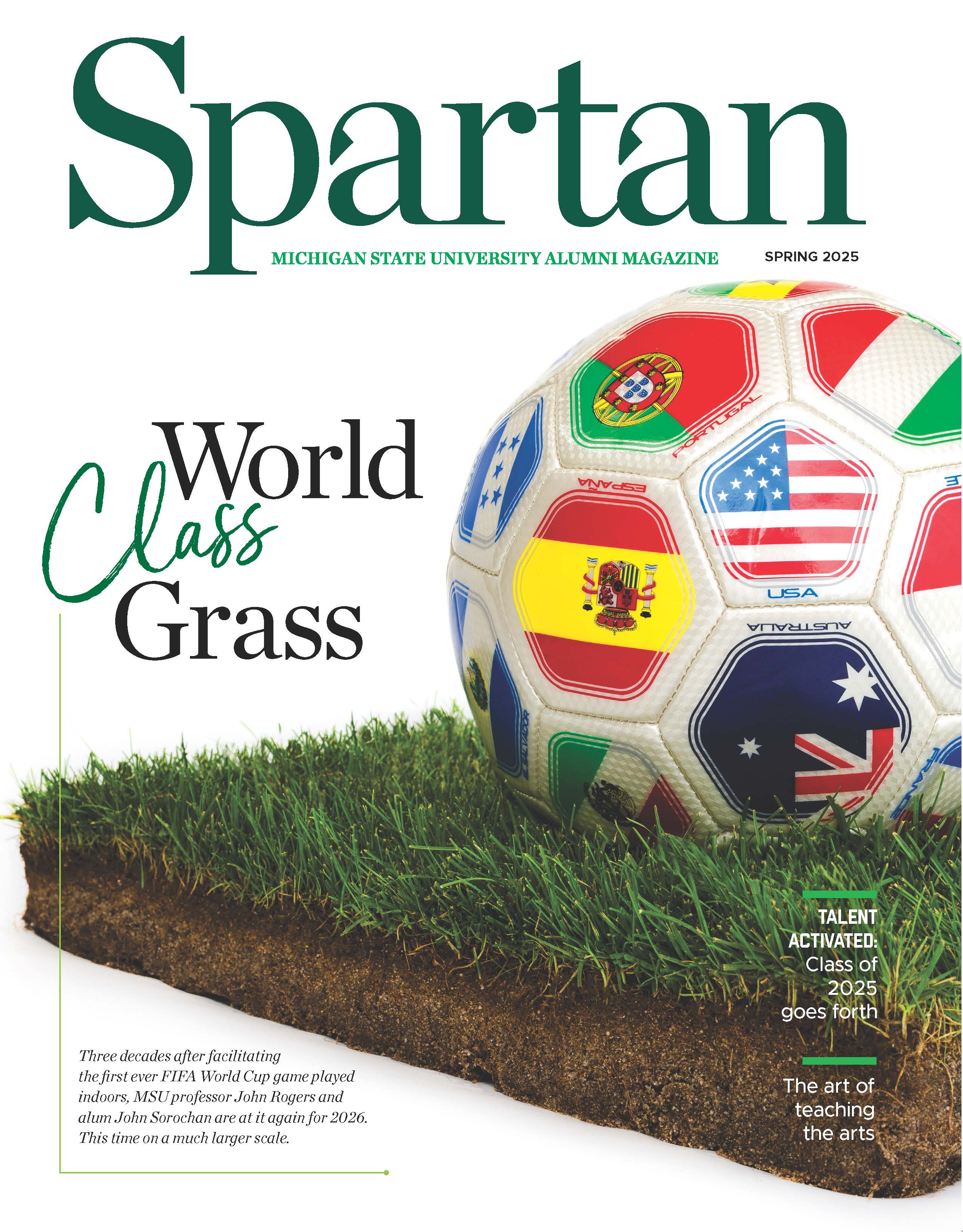
Sorochan’s research is focused on identifying species/cultivars and field construction types with better athlete-to-surface interactions for performance and safety, wear tolerance and ball-to-surface interactions for soccer, baseball and tennis.
When Sorochan transferred to MSU from the University of Calgary in his hometown of Calgary, Alberta, Canada, he came to East Lansing knowing that a career in turfgrass management was his goal. Inspired by a childhood friend, MSU alumni Craig Ewenchuk (B.S. ’86), he enrolled in the two-year Turfgrass Management Program offered by the MSU Institute of Agricultural Technology (IAT) in 1991.
“Craig’s dad was also a golf course superintendent, and, like his dad, Craig worked in the golf industry building golf courses. Craig went to MSU to study turfgrass and when he graduated, he moved to Spain to design and build golf courses all over Europe and Morocco,” Sorochan said. “I was visiting Craig for a few days in Spain, and that is where I first got exposed to the turfgrass industry. I thought it was an amazing job – you get to work outside, design and build golf courses and travel the world.”
He returned to Canada with turfgrass on his mind and ultimately found a position on the grounds crew at Earl Grey Golf and Country Club.
“I immediately fell in love with the job and knew that a career in the turfgrass industry was what I wanted to do,” Sorochan said.
Sorochan was a member of Rogers’ third class in the two-year turfgrass management program, and the two developed a relationship that sparked each other’s passion for turfgrass research and led to more than 30 years of collaboration.
“Trey was my mentor for the 11 years I spent as a turfgrass student at MSU. I learned a great deal from him and by the time I was getting ready to leave, we were finishing each other’s sentences.” Sorochan said.
MSU Turfgrass also provided the example for what Sorochan has helped build at UT. When he was hired in 2002, the UT Turfgrass program had two full-time faculty and no existing research plots. Today, the number of faculty has doubled, and UT Turfgrass is a global leader in sports turf management research.
“There are three of us with degrees from Michigan State working on turfgrass here at the University of Tennessee,” Sorochan said. “I think what we’ve been able to grow here reflects what Michigan State provided for me in my time in East Lansing. I was able to see what excellence can be, and I was able to help be a catalyst to help build that at the University of Tennessee.”
Soil scientist finds calling, takes root in East Lansing
Jack Guevara came to East Lansing from the Philippines, in the fall of 2016 for a study abroad program with the University of the Philippines - Los Baños.
“When my college advisor, Dr. Gina Pangga, found out that I was going to MSU, she said, ‘take the turfgrass program. Take turf classes – all of them,’” Guevara said. “At first, I didn’t even know what turf was – ‘I guess it’s just grass,’ I was thinking. We don’t really have research programs on turfgrass at home, but I took her advice and I’m so glad I did.”
Guevara took courses taught by Rogers during the program and found her interest in soil science paired well with turfgrass management. However, Guevara knew she needed practical experience if she wanted to pursue a career in turfgrass research, so she approached Rogers during her study abroad to ask for advice on securing an internship. Rogers helped land Guevara a position at The Country Club Philippines.
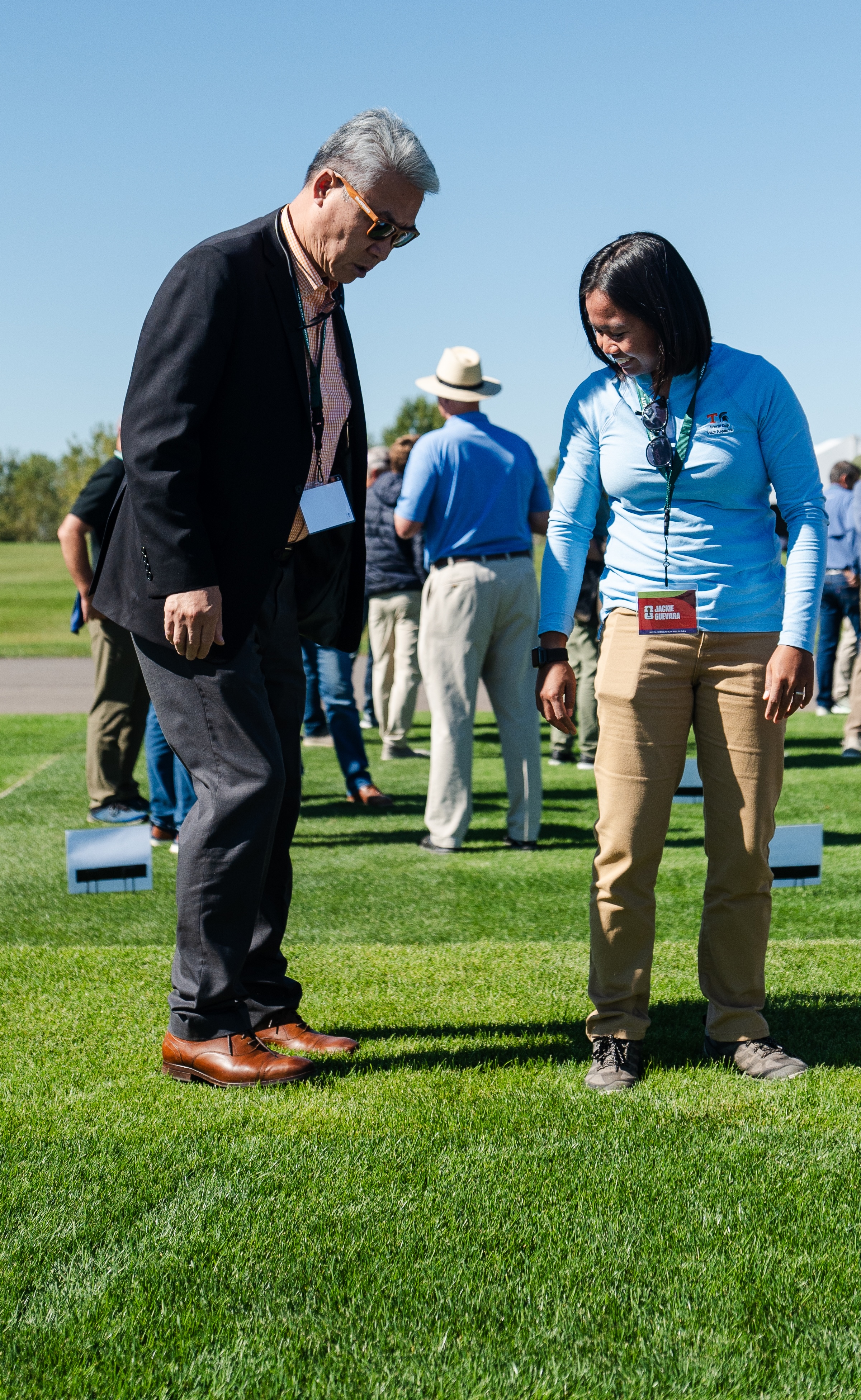
After this experience, Guevara decided that turfgrass management was something that she wanted to explore and enrolled at MSU as a master’s student under the direction of Department of Plant, Soil and Microbial Sciences Professor Kevin Frank to learn more about it.
When Guevara heard about the FIFA World 2026 research coming to MSU, she wanted to join it and decided to go on to her Ph.D. under the guidance of Dr. Rogers and focused on research project examining sod grown on plastic and collaborating with sod farmers across the country growing the grass for the 2026 World Cup.
“Dr. Trey Rogers is the reason I’m where I am today. He’s been there for me from the very beginning,” said Guevara, who is now an assistant professor in PSM. “Dr. Rogers took a chance on a clueless undergrad student that was taking his class on a study abroad. He took a chance on me when I applied for his Ph.D. program, because it's a demanding program, and he’s selective about his students. Having him here for this journey has been very reassuring for me, because he has supported my career for eight years.”
“Jackie is a rock star. She’s been hired on the faculty here to help me out and teach some courses,” Rogers said. “She provides a lot of great new perspectives and ideas to our team and has been an immense help to our department already as a young faculty member.”
“Participating in the FIFA project has been surreal. I remember one of our first field days, speaking with representatives from FIFA and them talking about this being the biggest projects of their careers,” Guevara said. “For me, it’s the first project of my career, and I’m still learning so much, but seeing those players on the grass we helped grow has been very rewarding.”
IAT lays foundation for turfgrass success
For Ph.D. student Ryan Bearss, his passion for turfgrass research grew over time.
“I am like a lot of other students who enter the IAT Turfgrass program in that I wasn't super sure what I wanted to do with my career. I was a music producer, and I had picked up a job at Metro Detroit nursery, where I was a plant diagnostician. That’s where I ended up picking up my green thumb. People came to me with problems on their lawn, and at first, I had no idea how to solve it either, but I liked learning about the different plants to solve problems that help people, and that’s when I found my calling,” Bearss said.
Bearss enrolled in the IAT Turfgrass Management Program for Sports & Commercial Turf Management, where he discovered his interest in applied research. He continued his academic career at MSU, earning bachelor’s and master’s degrees in Crop and Soil Sciences, and is now two years into his Ph.D. program under Rogers’ direction.
The two-year IAT program laid the groundwork for his career in turf research, said Bearss, who serves as a research assistant for the FIFA project charged with enhancing sod-on-plastic systems and improving methods for supporting hybrid-grass systems.
“I can't speak highly enough about the IAT program, because it gave me the baseline knowledge to know that's the path I wanted to take and formed the steppingstones that I’ve been able to build upon. The things I learned in the IAT program are all things I am now using now in graduate school, I’m just able to take it to a deeper level.”
Bearss credits Rogers and the late Dr. Joe Vargas for allowing him to “cut his teeth” as an undergraduate researcher in their programs, and as a graduate student his experience has expanded to first-class flights to Qatar to visit World Cup host sites and learn about FIFA field management practices.
The research doesn’t stop for Bearss once the final goal is scored in 2026. His sites are set on improving efficiency and expanding the use of sod-on-plastic and modular-grass systems.
“I'm very excited to see the novel ideas that come from this project,” Bearss said. “The World Cup gives us the chance to assess where we are and evolve and advance the research, we're doing to further apply these systems to other leagues – the MLB, NFL, MLS – to ensure that sod-on-plastic, temporary field systems and hybrid systems are a mainstay for years to come.”



 Print
Print Email
Email




